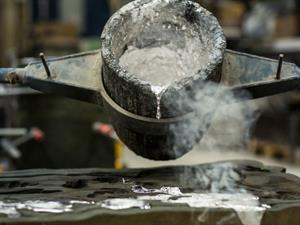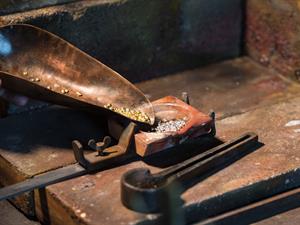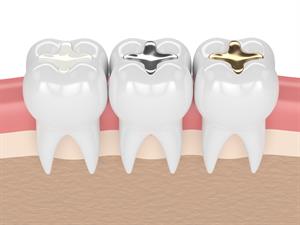PDF chapter test TRY NOW
An alloy is a mix-up of metals or a metal with another element. Their metallic bonding property defines alloys. An alloy can be a single-phase solid solution of metal elements or a combination of metallic phases (two or more solutions).
An alloy is more rigid than its components. Pure metals are usually soft. A metal's hardness can be increased by alloying it with another metal or nonmetal. Some familiar examples of alloys include brass, bronze, pewter cast and wrought iron, steel, coin metals, and solder.
Brass is a copper-zinc alloy. Unlike pure metals, most alloys have a melting range during which the substance slushes between solid and liquid phases.

Making of aluminium alloy
The physical properties of an alloy may not differ significantly from its constituent elements.
Previously we have learnt about the various metrological process and their properties. This topic will help us update our knowledge regarding alloys, the purpose of alloying and their uses.
Here are some basic questions to update your knowledge and to understand alloys.
1. I am a homogeneous mixture of two or more metals. I also used to make aircraft. Guess who I am?
Answer: Alloys - Aluminum alloys are used for making aircraft.
2. I am a necessary part of automobiles. You cannot create one without my help. Do you know who I am?
Answer: Iron alloys are used to make automobile parts.
3. You can touch, use, and see me as an essential part of your daily life. Guess who I am?
Answer: Copper alloys are used for making medals, decorative items, statues, coins and bells.
Alloys:
An alloy is a homogeneous mixture of two or more metals or of one or more metals with certain non-metallic elements.

Alloying process
The properties of alloys are often different from those of their components. Pure gold is brittle to be used. The addition of a small percentage of copper enhances its strength and utility.
Amalgam:
An amalgam is a mixture of mercury and another metal. These alloys are formed by metallic bonding, which uses the electrostatic force of attraction between electrons and positively charged metal ions.
Dental fillings are made of silver tin amalgam.

Amalgam filled teeth
Reasons for alloying:
(i). To change appearance and colour
(i). To change appearance and colour
(ii). To change chemical activity
(iii). To reduce the melting point
(iv). To improve hardness and tensile strength
(v). To improve resistance to electricity
(iii). To reduce the melting point
(iv). To improve hardness and tensile strength
(v). To improve resistance to electricity
